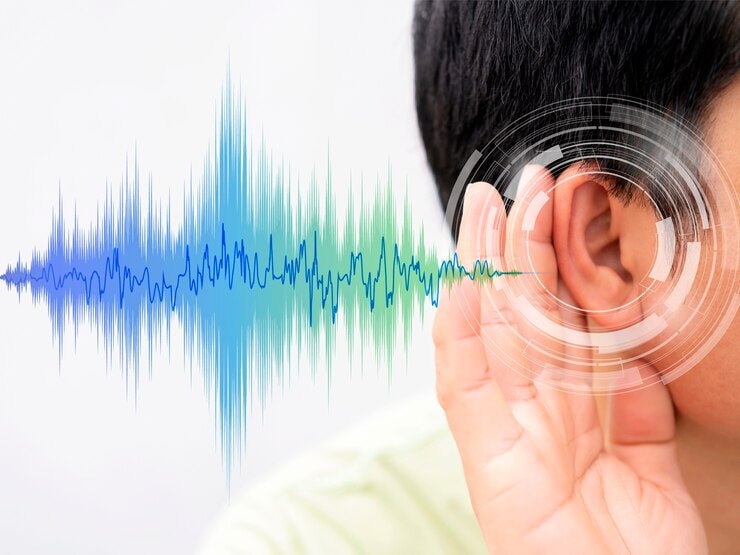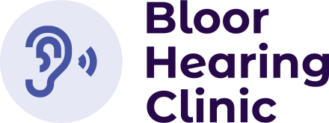
Our Blog
5 Types of Hearing Tests You Should Know
Hearing loss can manifest in difficulty understanding speech in a noisy environment or perceiving certain sounds. Fortunately, various types of hearing tests are available in Toronto, Canada to diagnose hearing problems effectively.
A hearing test is a painless and straightforward procedure to assess your hearing ability and identify any underlying problems. We’ll explore five of the most common hearing tests used to evaluate different aspects of your auditory system. Let’s dive into them.

Types of Hearing Tests
Several factors contribute to hearing problems, including age-related hearing loss and individual situations. A study in Canada found that over 60% of adults aged 70 to 79 experience hearing loss. The severity can range from mild to profound; the only way to find out is to have your hearing checked during an ear clinic Toronto visit. This wide spectrum calls for accurate diagnosis and determining the best course of treatment. You can book a hearing test Toronto consultation and discuss the type of test you need.
For a basic understanding of the test you might undergo, we’ll start off with the most common type of hearing test: pure tone testing.
1. Pure Tone Audiometry
A pure tone test precisely measures your hearing threshold, which is the faintest sound you can hear at different pitches. This helps pinpoint any hearing problems and their extent. Since human speech is made up of sounds across various frequencies, mapping this out helps audiologists understand how well you can hear.
The test involves wearing headphones and listening to a series of beeps or pure tones presented at varying volumes and frequencies. You’ll be asked to indicate whenever you hear sounds. The frequencies help audiologists analyse and determine the type of hearing loss, such as:
-
Conductive hearing loss
-
Sensorineural hearing loss
-
Mixed hearing loss
Pure tone audiometry tests generally provide a detailed picture of your hearing health for proper diagnosis and treatment.
2. Speech Testing
This test goes beyond pure tones and assesses your ability to understand speech in quiet and noisy environments. You might be asked to repeat words presented at different volumes and with background noise to determine your speech reception threshold – the softest level at which you can understand half of the words spoken. Speech testing helps identify difficulties in understanding conversation, a common symptom of hearing loss.
3. Tympanometry and Acoustic Reflex Testing
These tests together evaluate the functioning of your middle ear. Tympanometry measures the air pressure within your ear canal. This helps assess the mobility of your eardrum and middle ear bones, which are crucial for transmitting sound waves to the inner ear.
Meanwhile, acoustic reflex testing measures your inner ear’s response to loud sounds. Abnormal results in these tests might indicate problems with the middle ear that could be contributing to your hearing difficulties.
4. Otoacoustic Emissions (OAE)
This test assesses the health of the tiny hair cells in your inner ear, called the cochlea. These hair cells convert sound waves into electrical signals that travel to the brain. OAEs involve placing a small probe in your ear canal that emits sound and measures the echoes bouncing back from the hair cells. The presence or absence of these echoes helps determine if the hair cells are functioning normally.
5. Bone Conduction Testing
This test helps differentiate between conductive and sensorineural hearing loss. During the test, a bone conduction head band is placed behind the ear on the mastoid bone to determine hearing threshold, bypassing the external ear canal.
These are just five of the many types of hearing tests available. Your audiologist might use other tests in specific situations to assess the auditory nerve pathways or for infants and young children who cannot provide traditional responses during testing.
Other Tests
Beyond the five we’ve discussed, there are additional tests used for specific purposes or for patients who can’t participate in traditional testing. Below is a brief overview of some of these.
Auditory Brainstem Response (ABR) Testing
Auditory brainstem response testing measures the electrical activity within your auditory nerve and brainstem in response to sounds. It helps diagnose hearing problems in infants, young children unresponsive to traditional testing, or adults with severe hearing loss or neurological conditions.
Otoscopy
This isn’t technically a hearing test, but it’s often performed during a hearing evaluation. An otoscope is a handheld video device that allows the audiologist to visualise the ear canal, eardrum, and middle ear for any blockages, inflammation, or abnormalities that could be affecting hearing.
Tests for Children
When testing children who can’t provide traditional verbal responses, audiologists employ other methods. These might include:
-
Behavioural Audiometry: This test observes a child’s involuntary responses to sounds, such as head turns or eye movements.
-
Visual Reinforcement Audiometry: This test uses engaging toys or lights that activate in response to sounds, encouraging the child to attend to the stimuli.
-
Play Audiometry: This test utilises games and play activities with sounds to assess a child’s hearing ability in a more engaging way.
Online Hearing Tests
Online hearing tests offer a convenient and accessible way to get a preliminary sense of your hearing ability. These tests often involve listening to beeps or tones at various volumes and frequencies on your computer and indicating your responses online. This can be a starting point to see if you have hearing loss symptoms, potentially prompting you to seek professional help.
However, this test can lack the precision and comprehensiveness of a proper audiometry test performed by a qualified audiologist. It falls short in many ways especially when buying hearing aids online.
Furthermore, online retailers selling hearing aids may use these online tests as a marketing tool. After taking the test, you might be directed towards specific hearing aid models based on your results, but these recommendations may not be tailored to your personal needs.
In essence, online hearing tests can be a red flag and shouldn’t be the sole basis for purchasing hearing aids online. Consulting a qualified hearing aid Toronto specialist is always the safer and more effective route.
Conclusion
Hearing troubles such as difficulty understanding conversation or needing to turn up the volume on the TV can be signs of developing hearing loss. If you’re experiencing a ringing sound in your ears, this could be a tinnitus symptom. In these cases, a hearing evaluation with a tinnitus audiologist in Toronto is more than crucial. Early detection and diagnosis of hearing loss can help you take steps to manage the condition and improve your quality of life. Many treatment options are available, including hearing aids and, in severe cases, cochlear implants.
